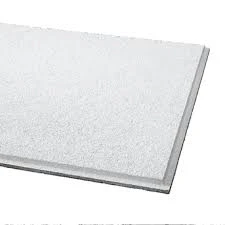- Afrikaans
- Albanian
- Amharic
- Arabic
- Armenian
- Azerbaijani
- Basque
- Belarusian
- Bengali
- Bosnian
- Bulgarian
- Catalan
- Cebuano
- Corsican
- Croatian
- Czech
- Danish
- Dutch
- English
- Esperanto
- Estonian
- French
- German
- Greek
- Hindi
- Indonesian
- irish
- Italian
- Japanese
- Korean
- Lao
- Malay
- Myanmar
- Norwegian
- Norwegian
- Polish
- Portuguese
- Romanian
- Russian
- Serbian
- Spanish
- Swedish
- Thai
- Turkish
- Ukrainian
- Uzbek
- Vietnamese
Nën . 09, 2024 20:11 Back to list
Optimal Sizes for Access Panel Ceilings in Various Applications
Understanding Access Panel Ceiling Sizes A Comprehensive Guide
Access panels play a crucial role in the functionality and maintenance of both residential and commercial spaces. These panels provide easy access to plumbing, electrical wiring, HVAC systems, and other critical infrastructure without compromising the aesthetics of a room. Among the various factors to consider when installing an access panel, ceiling size is particularly important. This article aims to explore how ceiling sizes affect the installation and functionality of access panels, as well as how to choose the right size for your needs.
Importance of Access Panels
Before diving into the specifics of ceiling sizes, it is essential to understand the significance of access panels. These installations facilitate maintenance and repairs, allowing professionals to reach vital systems without having to dismantle walls or ceilings completely. By installing access panels in strategic locations, property owners can ensure that necessary repairs and inspections can be carried out easily and efficiently, which ultimately saves time and money.
Standard Ceiling Heights and Access Panel Sizes
Ceiling height is a primary consideration when selecting access panels. Most residential and commercial buildings have ceilings ranging from 8 to 12 feet. Typically, the standard sizes for access panels vary, accommodating different needs. Common access panel sizes include 12” x 12”, 14” x 14”, and 24” x 24”.
For spaces with standard ceiling heights, a smaller access panel might suffice. However, in rooms with higher ceilings, a larger panel may be required to facilitate easier access. It is crucial to assess the type of work that will be conducted through the panel to determine the most suitable size. Larger panels can accommodate larger tools and equipment, making them a preferable option in many commercial settings.
Factors Influencing Access Panel Size Selection
access panel ceiling size

1. Type of Installation Depending on whether the access panel is placed in a drywall ceiling, a suspended ceiling, or a Furring ceiling, the depth and method of installation can influence the required size. For example, suspended ceilings may require a larger access panel due to the need to reach the space above the tiles.
2. Access Frequency Consider how often the access panel will be used. If frequent access is necessary, investing in a larger, more conveniently placed access panel can make maintenance tasks less cumbersome.
3. Type of Systems Behind the Panel The systems needing access can dictate the required access panel size. For large duct systems or extensive electrical setups, a larger panel is essential. Conversely, if the panel is designed primarily for inspections or occasional access to smaller systems, a smaller size may be adequate.
4. Building Codes and Regulations It's vital to consult local building codes and regulations which may dictate specific sizes or installation standards for access panels in various types of buildings. Making informed decisions based on regulations ensures compliance and safety.
Aesthetics and Integration
While functionality is essential, the aesthetics of an access panel should not be overlooked. Many access panels are designed to blend seamlessly with their surroundings, taking into account ceiling textures and colors. When considering ceiling size, it is essential to choose an access panel that integrates well without drawing attention. A well-placed, inconspicuous access panel within the ceiling can maintain the overall look of the room while serving its functional purpose.
Conclusion
When selecting an access panel, ceiling size is a critical element that should not be neglected. By considering factors such as ceiling height, installation type, access frequency, and the systems that require access, property owners can make informed decisions that enhance both functionality and aesthetics. Properly sized access panels can streamline maintenance processes, uphold safety standards, and ensure that necessary repairs can be conducted easily, ultimately contributing to the longevity and efficiency of the building’s infrastructure. By understanding and thoughtfully approaching the selection of access panel sizes, one can foster an environment where efficiency and design harmoniously coexist.
-
Transform Interiors with PVC Gypsum Ceiling: A Stylish, Durable, and Moisture-Resistant SolutionNewsMay.19,2025
-
The Smart Interior Upgrade: Discover the Durability and Versatility of Gypsum Ceiling Access Panel SolutionsNewsMay.19,2025
-
The Smart Choice for Interior Design: Discover the Value of PVC Gypsum Ceiling SolutionsNewsMay.19,2025
-
Mineral Fiber Ceiling Tiles: The Smart Blend of Performance and AestheticsNewsMay.19,2025
-
Mineral Fiber Ceiling Tiles: The Superior Choice Over Gypsum for Sound and Fire SafetyNewsMay.19,2025
-
Mineral Fiber Ceiling Tiles: Eco-Friendly Strength and Style for Every CeilingNewsMay.19,2025







